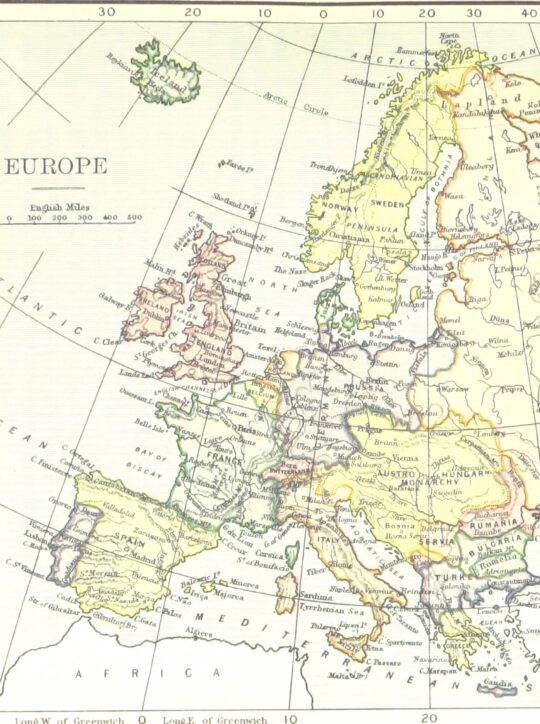The unification of Italy was achieved in stages, with each stage shaping the country’s borders and defining new lines which separated Italy from its neighboring countries. About a century ago, for instance, Italy’s northern regions extended to territories which were previously inhabited by communities who were subject to the Austro-Hungarian empire. Additionally, after World War II, the Italian territory known as Istria was transferred to former Yugoslavia. This article will focus on these territories specifically as it is not uncommon for some individuals seeking Italian citizenship by descent (jure sanguinis) to have ancestors who were born in these areas, and thus often ask themselves about the eligibility requirements that apply to them when filing an application for Italian citizenship.
The Austro-Hungarian Empire
In 1920, after the dissolution of the Austro-Hungarian empire, the provinces of Trento and Bolzano, in Trentino-Alto Adige, and some areas of northern Veneto and Friuli-Venezia-Giulia which mostly belonged to the Province of Gorizia, were ceded by the Austro-Hungarian empire to Italy. Therefore, if your ancestor was born in any of these territories and emigrated before July 16th 1920, you cannot apply for Italian citizenship because the possibility of filing an application for the recognition of Italian citizenship by descent was suspended in 2010. This is due to the government having issued Law 379/2000 in 2000 which established that individuals whose ancestors fell into this category could file an application for Italian citizenship only until 2010.
On the other hand, if your ancestor emigrated to another country after July 16th 1920, which is the day on which the territories mentioned above became part of Italy, you can apply for Italian citizenship because your ancestor became an Italian citizen after the annexation to Italy. In this case, you can file an application for Italian citizenship jure sanguinis via an Italian consulate or municipality and prove that your ancestor emigrated after July 16th 1920. It is very likely that your ancestor’s name will be listed in the citizenship lists that were held by the municipalities in the territories that were transferred to Italy in 1920. This is due to the fact that the Treaty of Saint-Germain-en-Laye, which was ratified between the former Austro-Hungarian empire and Italy on September 10th 1919, included a provision which stated that each municipality that became part of Italy needed to draft a citizenship list which included the names of the people that resided in that area at that time.
With regard to this, there is a very important exception which is worth mentioning: if your ancestor emigrated from the territories that were then transferred to Italy before 1920 but was registered in the municipality’s citizenship list, you can apply for Italian citizenship. However, please be aware that this is an exceptional circumstance; in other words, being registered in a citizenship list while living abroad was possible only under specific circumstances, in compliance with the provisions set forth by the Treaty.
The former Republic of Yugoslavia
After World War II, the Treaty of Paris (1947) established that a number of Italian territories, including some that were mostly part of the Italian peninsula known as Istria, would become part of Yugoslavia. The requirements to apply for citizenship by descent for individuals whose ancestors were born in these territories are slightly different. If your ancestor emigrated to another country before 1940, thus before the Italian territories were transferred to Yugoslavia, you can apply for a standard application for the recognition of Italian citizenship jure sanguinis. On the other hand, if your ancestor was born in one of the areas that were originally part of Italy but were then transferred to the former republic of Yugoslavia after World War II, and he/she resided in that area in 1940, you can apply for Italian citizenship by descent only if you meet certain additional requirements. More specifically, you need to provide proof that your ancestor was residing in that specific territory and that he/she was an Italian citizen in 1940 when the territory was transferred to Yugoslavia. You also need to prove that you know Italian and the culture by providing official documentation issued by an Italian association abroad that can verify your knowledge and skills. Law 124/2006 that regulates the acquisition of citizenship under these specific circumstances came into effect in 2006, and it instituted a special committee within the Ministry of the Interior which evaluates applications involving Italian territories that were part of the former Yugoslavian Republic. The committee is responsible for assessing applications submitted both via an Italian consulate abroad or via a municipality.
The Istrian peninsula, which comprises the territories that were transferred to Yugoslavia following the Paris Peace Treaties, stretches from Trieste to Rijeka (once known as “Fiume” in Italian). It is worth pointing out that between 200,000 and 330,000 Italians emigrated when Istria was transferred to ex-Yugoslavia after World War II, and especially between 1943- 1953.
In 1975, Italy and the former Republic of Yugoslavia signed the Treaty of Osimo; the objective was to define the borders between Italy and former Yugoslavia and end the disputes which had started in 1947 regarding the “free territory of Trieste”. Some individuals seeking citizenship might have ancestors who resided in the territories which were transferred permanently to Yugoslavia in 1977, which is when the Treaty of Osimo came into effect. In this case, Law 124/2006 established that applicants need to provide documentation certifying their knowledge of Italian and the culture, as explained above.
We hope this article has provided you with an overview of the rules and requirements that apply if your ancestors were born in the territories that were part of the Austro-Hungarian empire or that were transferred to former Yugoslavia, and you would like to file an application for Italian citizenship by descent. If you would like a free assessment or further information regarding applying for Italian citizenship, please do not hesitate to contact us at [email protected]. We will be happy to help you.

